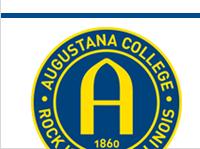They Yearned for America
Permanently on display in the lower level hallway
These four watercolors are studies for the series of tapestries "They Yearned for America" conceptualized by Åsa Bengtsson and produced by a team of weavers from Riga, Latvia. Through the project, Åsa Bengtsson and Carl-Axel Valén, a gallery owner and visionary of the project, documented the historical and emotional ties between Sweden and America. The project culminated with 9 large format woven panels including: They Yearned For America, New Sweden, Bishop Hill, Chicago, Minnesota, Going West, The Artists, Inventors Inventions Entrepreneurs, and Today’s Emigrants. For more information, see the exhibition catalog of the same name.
Study for Going West
“Go West, young man, and grow up with the country.” - Horace Greeley. The Swedes did indeed go west, migrating to the Pacific coast--namely Washington, Oregon and California. Here, Chief Seattle looks out over a horn of plenty containing a speeding train. Below are gold miners heading further west--to Alaska--for the promise of riches while climbing atop the names of some prominent Swedish communities. Tapestry size 6’7” x 16’2”
Study for Minnesota
“What a glorious new Scandinavia might not Minnesota become.” - Fredrika Bremer. The Statue of Liberty in the upper right corner flanks an advertisement enticing Swedes to head west and buy land. And head west they did--Minnesota boasts one of the largest communities of Swedish descent. The tree trunk images pay homage to the forestry and logging industries of Minnesota, of which Swedish immigrants played a large role. An American Indian watches on as the new settlers come. Buffalo herds stand atop land plots containing hints of lake imagery. The Greyhound bus tells the history of a major company, founded by a Swedish immigrant, that started by transporting miners in Minnesota in 1914. Tapestry size 6’7” x 15’11”
Study for They Yearned for America
"His home was in the Old World, in the world that was frail, worn-out, decrepit, old and weak and finished" -Vilhelm Moberg. Swedish immigration began in earnest in the mid-1800s, but the earliest Swedish presence in the U.S. came before the country existed as such, with the so-called New Sweden colony on the shores of the Delaware River in 1638. In the middle of this study stands the chief of the Lenape Indian tribe facing the leader of the New Sweden colony--Johan Printz. Below them sails the Kalmar Nyckel, one of the boats that carried Swedes to New Sweden. To the right lies Karl Oskar, the protagonist of Vilhelm Moberg’s books detailing a Swedish family’s immigration to America in the 1850s. Tapestry size 6’7” x 12’3”
Study for Chicago
“They shared in the making of America from the wilderness days…Their toils, endurance, valor…are woven as a scarlet thread in the American story” - Carl Sandburg. By 1873 there were 30,000 Swedes in the Windy City, largely in Andersonville, once a farming community and now a bustling immigrant neighborhood. In front of busy streets sits Carl Sandburg, a musician of Swedish descent, playing his guitar. In the sky flies Charles Lindbergh’s biplane (he was a second generation Swede) among the names of popular Swedish-American newspapers. Tapestry size 6’7” x 16’2”
Source
“They yearned for America = Längtan till Amerika,” Åsa Bengtsson. Stockholm, Sweden: Galerie Aix AB, c2002.









